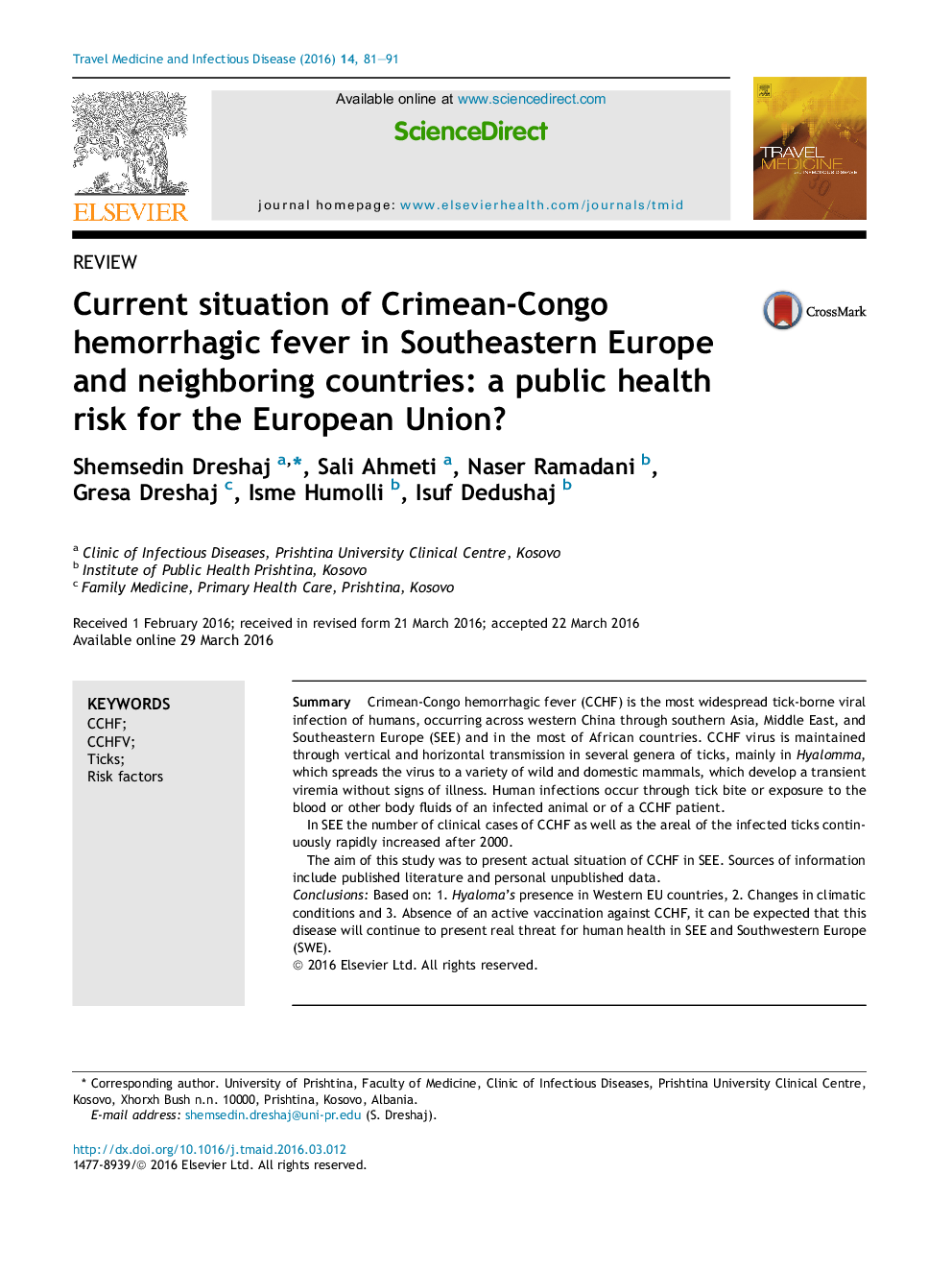| Article ID | Journal | Published Year | Pages | File Type |
|---|---|---|---|---|
| 3392732 | Travel Medicine and Infectious Disease | 2016 | 11 Pages |
SummaryCrimean-Congo hemorrhagic fever (CCHF) is the most widespread tick-borne viral infection of humans, occurring across western China through southern Asia, Middle East, and Southeastern Europe (SEE) and in the most of African countries. CCHF virus is maintained through vertical and horizontal transmission in several genera of ticks, mainly in Hyalomma, which spreads the virus to a variety of wild and domestic mammals, which develop a transient viremia without signs of illness. Human infections occur through tick bite or exposure to the blood or other body fluids of an infected animal or of a CCHF patient.In SEE the number of clinical cases of CCHF as well as the areal of the infected ticks continuously rapidly increased after 2000.The aim of this study was to present actual situation of CCHF in SEE. Sources of information include published literature and personal unpublished data.ConclusionsBased on: 1. Hyaloma's presence in Western EU countries, 2. Changes in climatic conditions and 3. Absence of an active vaccination against CCHF, it can be expected that this disease will continue to present real threat for human health in SEE and Southwestern Europe (SWE).
